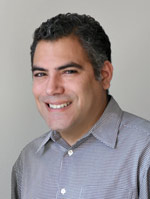 I’m a believer in the phrase “hope springs eternal.” How else can we explain the perseverance of people in recovery? Or people with HIV/AIDS who, despite living in a world filled with stigma and other obstacles, find a way to live their lives with dignity and optimism?
I’m a believer in the phrase “hope springs eternal.” How else can we explain the perseverance of people in recovery? Or people with HIV/AIDS who, despite living in a world filled with stigma and other obstacles, find a way to live their lives with dignity and optimism?
Jamar Rogers is an excellent example. The semifinalist from season 2 of The Voice has earned admiration from his fans not only for his singing talent but also for his integrity. After Rogers disclosed on the show that he has HIV, he could have chosen to stop there. But he didn’t. Through interviews and public service announcements, he has embraced his role as an openly HIV-positive celebrity.
As influential as HIV has been in his life, Rogers also has been forthright in sharing his substance abuse struggles. Substance abuse fuels HIV rates and is prevalent among people with HIV, but it can be overcome. Click here to read more on how Rogers, Lynn Morrow, Michael Weber and other people living with the virus have found the road to recovery.
The ultimate hope most of us living with HIV wish for is a cure, of course, and an end to the pandemic. Until then, most of us are seeking as normal a life as possible and a slowing of the spread of the disease in our own bodies and around the world.
Even if the cure were here tomorrow, the pandemic will never truly end until new HIV cases are effectively prevented. And vice versa. That’s why prevention research goes hand in hand with cure research.
Unfortunately, both areas of research are many years from yielding results that could be implemented widely, except for maybe one idea: treatment as prevention (TasP).
Data from HPTN 052, a major ongoing study, shows that people with HIV who take antiretrovirals may lower their chance of spreading the virus by 96 percent. However, a recent Chinese study put that number at 26 percent. And, depending on how you look at the data, many advocates and researchers would argue that the HPTN 052 data actually puts that number at 100 percent.
Navigating TasP isn’t easy, but we take you step by step in our feature story. Understanding the ethical and practical hurdles, as well as the potential benefits on a personal and population level, will be worth the trip.
Another trip worth taking is reading our Q&A with Michael Kaplan, the new president and CEO of AIDS United. The group is the result of the merger in 2011 of The National AIDS Fund and AIDS Action. Kaplan shares his hopes for the future grant making, policy and advocacy work of the organization. Let’s hope he succeeds.
High Hopes






Comments
Comments